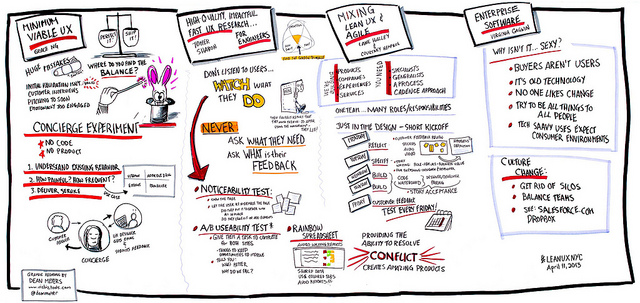A Comprehensive Guide on What Are User Personas
In the world of user experience (UX) design, User Personas play a pivotal role. These fictional, yet representative, characters embody the different types of users for a product or service.
Crafted from extensive research and data, personas help designers and stakeholders understand the diverse needs, goals, and behaviors of their target audience. In this blog post, we’ll dive deep into the concept of user personas, how to create them, and their role in the design process.
What Are User Personas?
User Personas are fictional profiles created to represent specific segments of a target audience. They are derived from qualitative and quantitative research, ensuring that they reflect real user behaviors, attitudes, and goals. Personas are equipped with names, demographics, and psychographics, which make them relatable and memorable for the design team.
Key Elements of a User Persona:
- Name: Personalizes the persona.
- Demographics: Includes age, gender, location, education, and occupation.
- Goals: Describes what the user aims to achieve.
- Motivations: Explains why these goals matter to the user.
- Pain Points: Highlights challenges or frustrations faced by the user.
- Behaviors: Summarizes habits, routines, or preferences.
- Quotes: Provides a relatable statement reflecting the user’s mindset.
Personas are a vital reference throughout the design process, ensuring that decisions are aligned with user needs. For instance, when designing the layout of a website or determining the features of a mobile app, personas help keep the focus on the user.
How to Create User Personas
Creating effective user personas requires a structured approach and a commitment to understanding the target audience. Here are the steps to build them:
1. Identify the Goal of Your User Personas
Determine why you’re creating personas. What decisions will these personas inform? For example, are they meant to guide website design, app functionality, or marketing strategies?
2. Conduct User Research
User research is the cornerstone of creating accurate personas. Use methods such as:
- Interviews: Gain in-depth insights through one-on-one or group discussions.
- Surveys: Collect quantitative data from a broader audience.
- Focus Groups: Engage small groups to explore shared experiences and needs.
- Online Research: Analyze forums, social media, or customer reviews.
- Analytics Data: Study usage patterns and drop-off points.
3. Gather Data
Compile information about user demographics, behaviors, goals, motivations, and pain points. For instance, a fitness app’s research might reveal that busy professionals prioritize quick workout routines, while beginners seek detailed guidance.
4. Create a User Persona Template
Use a template to organize your findings. A typical user persona template includes:
- Name and photo (optional)
- Demographics (e.g., age, gender, occupation)
- Goals and motivations
- Pain points
- Behaviors
- A quote summarizing their perspective
5. Develop the Personas
Using your template, craft detailed profiles that represent each user group. For example:
Sarah
- Age: 25
- Occupation: College student studying education
- Goals: Stay organized and manage her time effectively
- Pain Points: Struggles to find time for her tasks
- Quote: “I’m always running from one thing to the next; I need something to help me stay on track.”
6. Create Additional Personas as Needed
If your product serves multiple user groups, repeat the process to represent each one.
7. Review and Revise
Personas should evolve as you gather more data. Regular updates ensure that they remain accurate and relevant.
Tools and Techniques for Creating User Personas
- Interviews: Provides qualitative insights.
- Surveys: Captures quantitative data at scale.
- Focus Groups: Facilitates discussions among users.
- User Testing: Observes real-world interactions with a product.
- Analytics: Highlights patterns in user behavior.
- Customer Feedback: Offers direct insights into user satisfaction and pain points.
Using a mix of methods ensures a comprehensive understanding of your audience.
How to Use User Personas
User Personas are not static documents—they’re active tools that influence every stage of the design process. Here’s how they can be used:
Scenario 1: Redesigning a Fitness App
The design team creates three personas:
- Samantha: A busy working mom focused on quick, effective workouts.
- Michael: A fitness enthusiast tracking his progress.
- Carla: A beginner seeking guidance.
These personas guide decisions like app layout, feature prioritization, and content.
Scenario 2: Developing a Social Networking Platform
The team creates personas such as:
- Karen: A college student sharing moments with friends.
- Tom: A professional using the platform for networking.
- Sue: A retiree reconnecting with old friends.
Each persona’s needs inform the platform’s design, ensuring it caters to diverse audiences.
Tips for Creating and Using User Personas
- Conduct Thorough Research: Use diverse methods to gather accurate data.
- Avoid Stereotypes: Make personas realistic and nuanced.
- Make Them Relatable: Use names, backgrounds, and goals to humanize personas.
- Keep Personas Updated: Regularly revise them based on new insights.
- Use Personas Actively: Reference them during brainstorming, design, and testing phases.
Examples of User Personas
Here are a few sample personas:
Sarah
- Age: 25
- Occupation: College student
- Goals: Stay organized
- Pain Points: Finds it hard to manage tasks
- Quote: “I need something to keep me on track.”
Tom
- Age: 40
- Occupation: Small business owner
- Goals: Streamline operations
- Pain Points: Difficulty managing his team
- Quote: “I’m constantly putting out fires.”
Maria
- Age: 60
- Occupation: Retiree
- Goals: Stay active
- Pain Points: Needs motivation for fitness
- Quote: “I want to stay healthy but need help staying on track.”
Conclusion
User Personas are invaluable tools for designing user-centric products and services. By representing real user needs and behaviors, they ensure that design decisions are informed and impactful. Whether you’re redesigning a fitness app or launching a social platform, personas can help you create experiences that resonate with your audience.
References:


